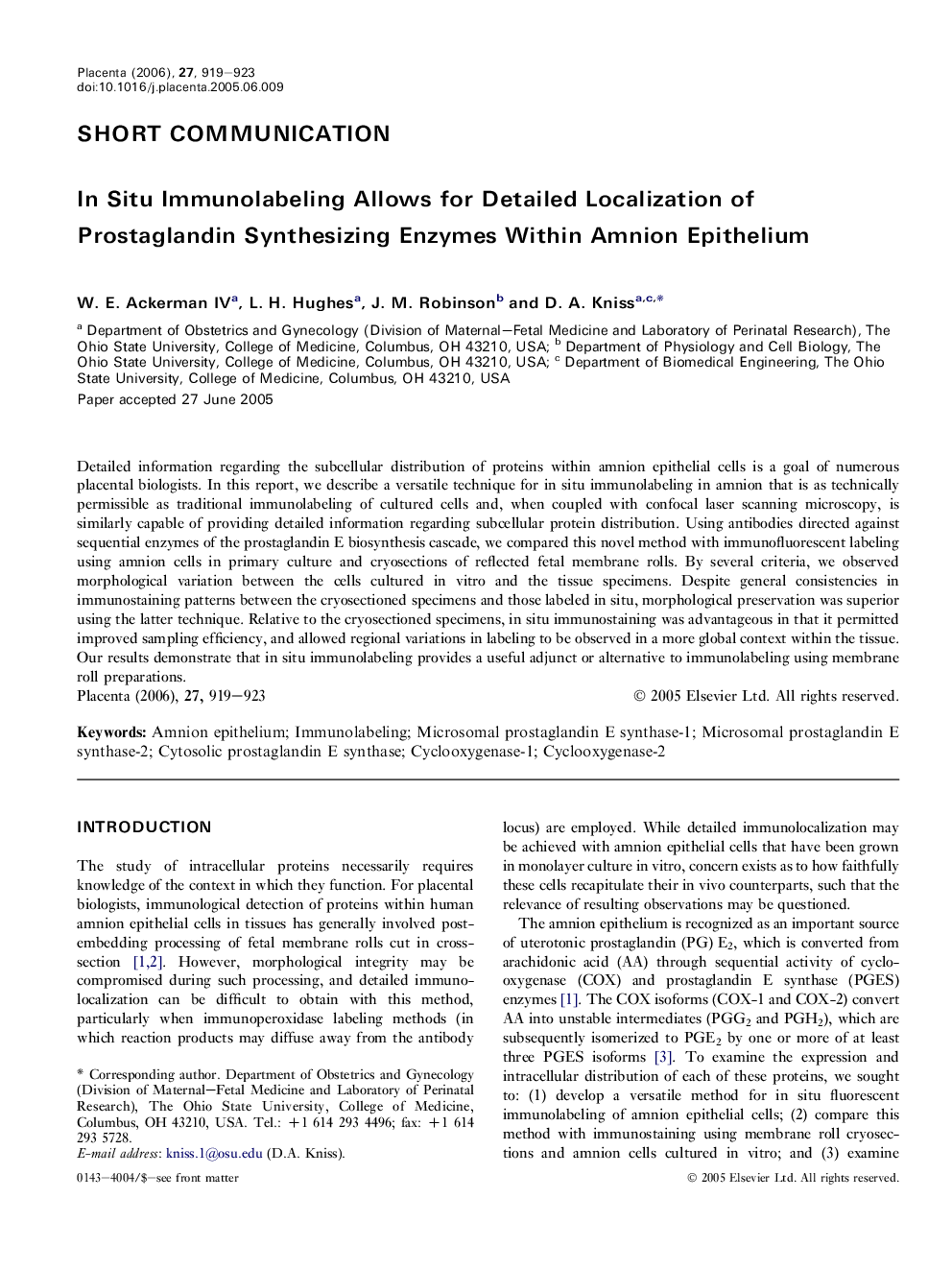| Article ID | Journal | Published Year | Pages | File Type |
|---|---|---|---|---|
| 2790089 | Placenta | 2006 | 5 Pages |
Detailed information regarding the subcellular distribution of proteins within amnion epithelial cells is a goal of numerous placental biologists. In this report, we describe a versatile technique for in situ immunolabeling in amnion that is as technically permissible as traditional immunolabeling of cultured cells and, when coupled with confocal laser scanning microscopy, is similarly capable of providing detailed information regarding subcellular protein distribution. Using antibodies directed against sequential enzymes of the prostaglandin E biosynthesis cascade, we compared this novel method with immunofluorescent labeling using amnion cells in primary culture and cryosections of reflected fetal membrane rolls. By several criteria, we observed morphological variation between the cells cultured in vitro and the tissue specimens. Despite general consistencies in immunostaining patterns between the cryosectioned specimens and those labeled in situ, morphological preservation was superior using the latter technique. Relative to the cryosectioned specimens, in situ immunostaining was advantageous in that it permitted improved sampling efficiency, and allowed regional variations in labeling to be observed in a more global context within the tissue. Our results demonstrate that in situ immunolabeling provides a useful adjunct or alternative to immunolabeling using membrane roll preparations.
